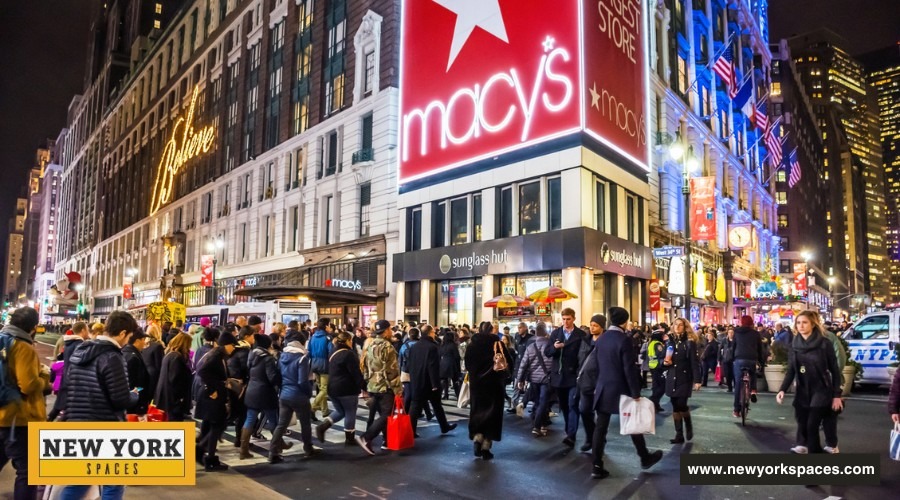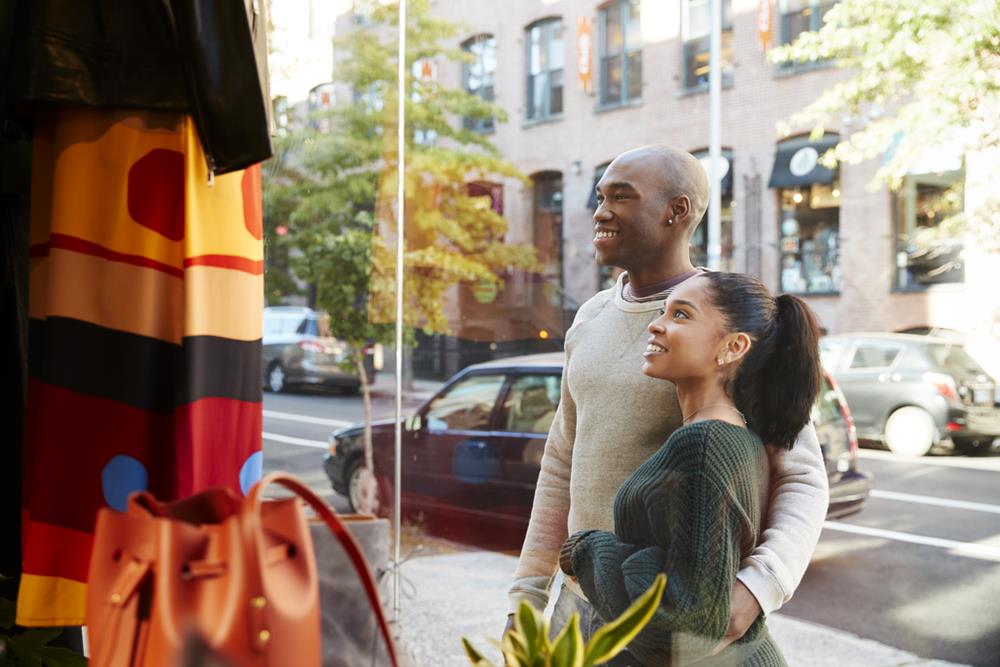New York City, a place where every street and building has a story, is witnessing a remarkable shift in its retail scene. Everything is evolving, from the way we browse and buy to the very essence of what a store can be. This story isn’t just about shops changing their looks; it’s about a deeper transformation driven by technology, economics, and our desires as consumers.
Historical Context
The retail landscape in New York has always mirrored the city’s spirit: dynamic, diverse, and ever-changing. In the past, shopping was more than a transaction; it was an experience. Storefronts were not just places to buy; they were the heart of the community, where people met, mingled, and discovered the latest wonders brought by ships from distant lands.
Then and Now
When comparing yesterday’s retail environment with today’s, one can’t help but feel nostalgic yet excited. The grand department stores, with their lavish window displays and elegant sales clerks, have given way to a new breed of retail—one that’s digital, personalized, and everywhere.
Factors Driving Change
In the heart of New York, amidst its ever-evolving skyline, the retail industry is undergoing a significant transformation. This change is fueled by two main drivers: the economic climate and rapid technological advancements. Both forces are reshaping the traditional retail model, introducing new shopping paradigms that cater to the modern consumer’s needs and expectations.
Economic Shifts
Economic ups and downs have always affected retail. When times are good, luxury flourishes; in tougher times, thrift becomes the trend. Lately, the economic rollercoaster has changed more than just what we buy—it’s changed how we buy.
- Consumer Spending Behavior: The recent shifts in the economy have us holding our wallets a bit tighter, looking for value not just in price but in experience. We’re not just buying a product; we’re investing in what it represents.
Technological Advancements
Technology has been the silent disruptor in New York’s retail saga. It’s not just about shopping online; it’s about how technology is redefining the shopping experience from the ground up.
- E-commerce vs. Brick-and-Mortar: The convenience of shopping from your couch has put pressure on traditional stores to offer more. It’s not the end of physical stores but the beginning of a new chapter where they transform to offer experiences you can’t get online.
- The Future Is Now: Imagine trying on clothes virtually using AR or having AI recommend products that match your style perfectly. This isn’t sci-fi; it’s happening right now in New York. These innovations are not just gimmicks; they’re reshaping our expectations and making shopping seamless, personalized, and, dare we say, fun.
Societal Trends
The heartbeat of New York’s retail landscape is its people and their evolving values and preferences. Let’s dive into two significant societal shifts that are reshaping retail.
A New Consciousness: Today, shoppers in New York are not just looking for products; they’re seeking value. Sustainability and localism have become more than buzzwords; they’re priorities. Consumers are increasingly choosing brands that align with their personal beliefs, favoring eco-friendly products and local artisans. This shift isn’t just about being trendy; it’s a reflection of a deeper desire for responsibility and community support.
Experiential Retail Comes Alive: Gone are the days when shopping was a mere transaction. Now, it’s about the experience. Stores are transforming into spaces where you can do more than just buy; you can learn, play, and connect. Whether it’s a workshop at a clothing store or a yoga class at a sporting goods shop, these experiences create a bond between the brand and the customer, turning shopping into an event to remember.
The Physical Transformation
The retail landscape is not just changing; it’s undergoing a metamorphosis, marked by the closure of many stores but also the innovative adaptation of others.
A Look at the Numbers: It’s no secret that New York has seen its fair share of store closures in recent years. From iconic department stores to small, family-run businesses, the impact of economic pressures and shifting consumer habits has been widespread. However, these closures tell only half the story.
Adapting to Survive: The stores that remain are not just surviving; they’re thriving by embracing change. Many have revamped their interiors, making spaces more flexible and interactive. Others have expanded their offerings to include services and experiences that draw people in. From personalized shopping experiences to in-store cafes and event spaces, these adaptations are redefining what it means to go shopping.
New Retail Formats and Experiences
Innovation is the name of the game in New York’s retail evolution, with new formats and experiences emerging to meet the demands of the modern consumer.
- Pop-Up Shops: The rise of pop-up shops is a testament to the city’s dynamic retail environment. These temporary stores offer brands a chance to test the waters in new locations, launch exclusive collections, or simply create buzz. For consumers, pop-ups are a treasure hunt, offering unique products and experiences that can’t be found anywhere else.
- Concept Stores and Experiential Spaces: Imagine walking into a store where every detail, from the decor to the products to the events, tells a story. That’s the essence of concept stores. These spaces blur the lines between shopping, art, and entertainment, offering a curated experience that engages all the senses. Similarly, experiential spaces take this a step further, integrating technology and design to create immersive shopping experiences that are as memorable as they are innovative.
Through these transformations, New York’s retail landscape continues to be a vibrant reflection of its people—ever-changing, resilient, and forward-looking. The shifts in societal trends and the physical adaptations of stores are not just about the commerce of buying and selling; they’re about creating connections, building communities, and enriching our everyday lives.
Urban Development and Retail
The streets and buildings of New York are not just physical spaces; they’re the backdrop to a dynamic interplay between urban development and retail evolution.
Shaping Spaces: Urban planning and development have a profound impact on retail spaces in New York. As neighborhoods transform, so do the retail opportunities within them. The development of new residential or commercial areas often brings with it a surge in retail to cater to new communities and workers. This symbiotic relationship shapes the city’s landscape, with each influencing the growth and direction of the other.
Building Communities: Retail plays a crucial role in community building and urban regeneration. Beyond commerce, retail spaces act as social hubs—places where people meet, interact, and experience the culture of their city. Through thoughtful urban development, retail can be a catalyst for revitalizing neighborhoods, providing not just goods but places for community engagement and social connection.
The Future of Retail in New York
As we look toward the horizon, the future of retail in New York City is ripe with possibilities and poised for profound changes.
What’s Next?: Current trends suggest a move towards even more personalized and immersive shopping experiences. Technology will continue to play a pivotal role, with augmented reality (AR), virtual reality (VR), and artificial intelligence (AI) becoming more integrated into the retail experience, offering customers new ways to engage with products and brands.
Innovation at the Forefront: The continued technological innovation will likely spur the development of new retail formats and business models. Subscription services, on-demand manufacturing, and the rise of direct-to-consumer brands could redefine what it means to shop, blurring the lines between online and offline experiences.
Challenges and Opportunities
The road ahead for New York’s retail sector is filled with both challenges and opportunities, each offering a chance to redefine the industry.
Navigating Change: Retailers and consumers alike face the challenge of keeping pace with rapid technological advancements and shifting consumer expectations. Adapting to these changes while maintaining the essence of what makes shopping in New York special will be key.
A World of Possibilities: These challenges come with a silver lining—the opportunity for innovation. Retailers who are willing to experiment, embrace new technologies, and truly listen to their customers will find themselves at the forefront of a new era of retail, one that’s more vibrant and inclusive than ever before.
Conclusion
The transformation of New York’s retail landscape is a multifaceted journey driven by economic shifts, technological advancements, and societal trends. As the city’s urban fabric evolves, so too does the way we shop and interact with our communities. Looking ahead, the future of retail in New York will undoubtedly be shaped by our ability to adapt, innovate, and reimagine the possibilities of what retail can be. This journey is not just about the survival of stores but about enriching our city’s culture and community life, proving that in the heart of New York, change is the only constant.



